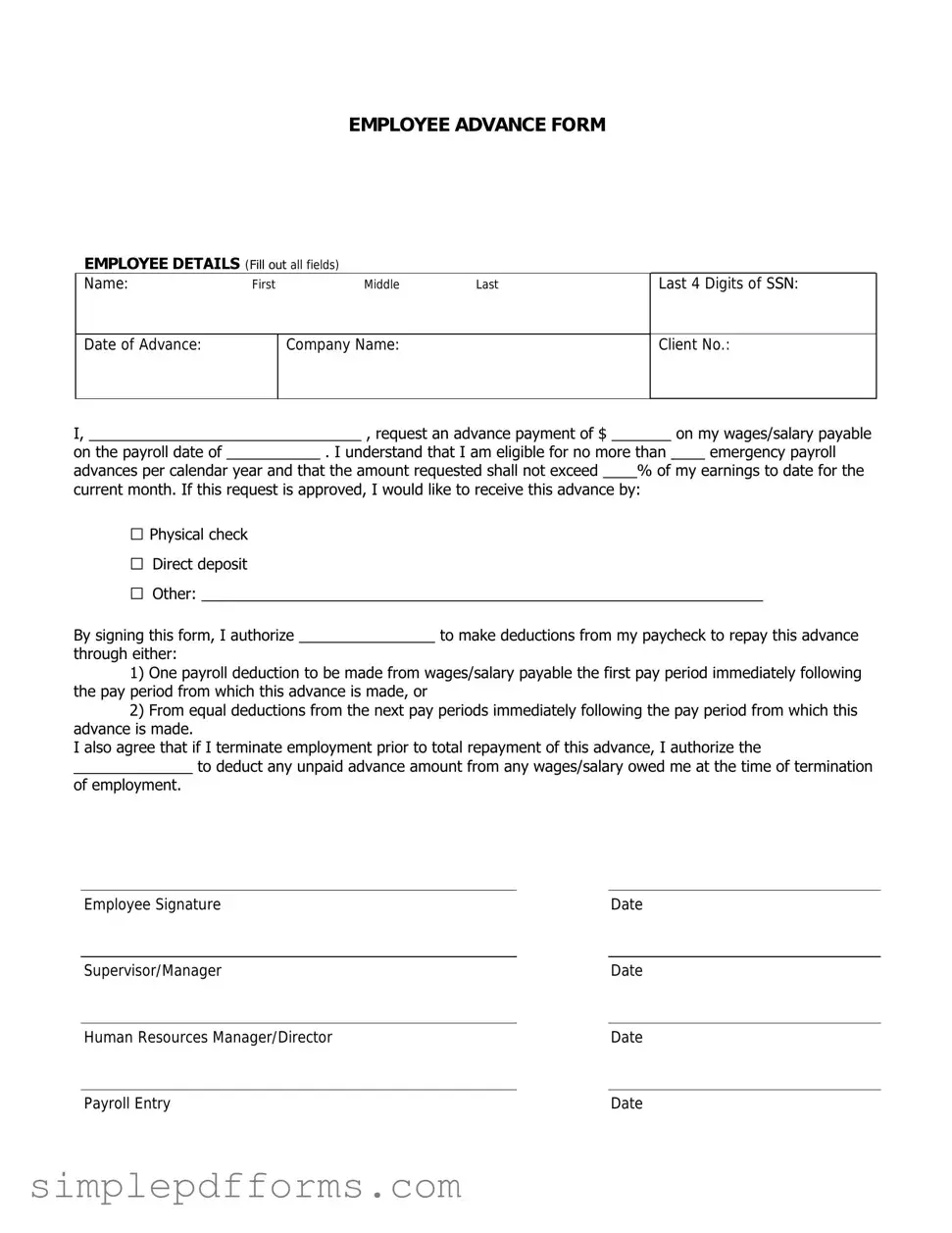EMPLOYEE DETAILS (Fill out all fields)
Name: |
First |
Middle |
Last |
|
|
|
|
Date of Advance: |
|
Company Name: |
|
|
|
|
|
Last 4 Digits of SSN:
Client No.:
I, ________________________________ , request an advance payment of $ _______ on my wages/salary payable
on the payroll date of ___________ . I understand that I am eligible for no more than ____ emergency payroll
advances per calendar year and that the amount requested shall not exceed ____% of my earnings to date for the
current month. If this request is approved, I would like to receive this advance by:
□Physical check
□Direct deposit
□Other: __________________________________________________________________
By signing this form, I authorize ________________ to make deductions from my paycheck to repay this advance
through either:
1)One payroll deduction to be made from wages/salary payable the first pay period immediately following the pay period from which this advance is made, or
2)From equal deductions from the next pay periods immediately following the pay period from which this advance is made.
I also agree that if I terminate employment prior to total repayment of this advance, I authorize the
______________ to deduct any unpaid advance amount from any wages/salary owed me at the time of termination of employment.
Employee Signature |
|
Date |
|
|
|
Supervisor/Manager |
|
Date |
|
|
|
Human Resources Manager/Director |
|
Date |

